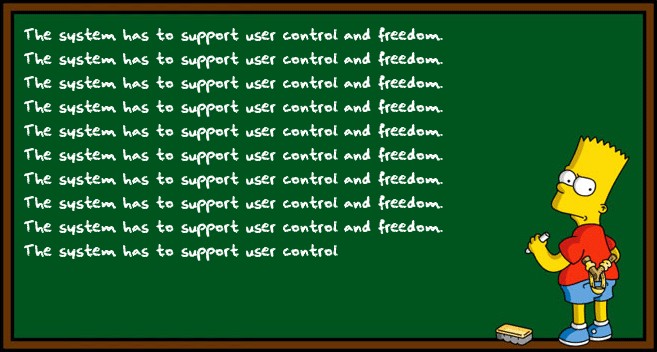Let’s face it: Nowhere do the needs of users/customers and the management of a product/service diverge as much as when it comes to ‘account termination’ – i.e. when customers – want to say goodbye for whatever reason.
As in any situation, there are different scenarios WHY someone would no longer want to use a particular product or service.
A worst case scenario
Let’s just assume the “worst case”: If customers are dissatisfied with something, they will leave sooner or later. You must remember that the customer a) has already reached a certain emotional status at that moment and b) has a correspondingly perhaps not (any longer) so good relationship to the product/service, i.e. is possibly rather ‘bad’ to speak of it.
Now we often observe that it is not made so easy for people to cancel an existing account. Countless hurdles have to be overcome, compulsory forms and questions have to be filled out, and if you are unlucky, you cannot cancel the account at all, but have to write a cumbersome mail, which may be a bit too long. is also never answered, or you are left in the dark.
Even if you get a response, this violates the golden rule that the user should have control.
There are, as already mentioned, different reasons why someone wants to delete an account, and this should be RESPECTED, otherwise we are at Hotel California Syndrome: You can check out but you can never leave.
It is also understandable from a business perspective that you might not want to make it “too easy” for customers to leave. However, the “Cancel Button” is the wrong starting point. Here, is more about preventing the desire to cancel from arising in the first place with regard to product and service satisfaction, or working on the product strategy if the service is not attractive to customers in the long term.
So let’s get back to our emotionally charged customer, who is now looking for the cancellation button with a huff and puff – which, by the way, is often very well hidden and can only be found with a lot of luck or a call to customer support.
What is going on in the mind of the person who, after a minute-long button search, possibly a call to and countless questions, attempts at persuasion and compulsory forms from the system, has finally found the redeeming button?
Will he recommend the product to others? Report positively about it? No, certainly not.
First, bad memories (emotions in general) like to stick in the mind for a long time and surprisingly very well for years and second, if he is really pissed off, he will vent his frustration on social media networks or even blog about it.
Suppose I go into a store and want to walk out without buying anything. What impression does it make now when the salesman holds the door shut for me, bombards me with sweaty questions, why I would like to leave and follows me out the door. Will I ever step foot in this store again? 😀 Will I maybe tell my friends about this experience and mention how crazy they are there and tell them not to go there?
Exactly.
So, if this is the desired marketing strategy or effect that the company wants to achieve: Please – Go for it.
We can only continue to recommend: At least, make them go with a smile. (Yes, even if the management is crying now).
Of course, you can express regret for losing a customer (you should) and you can offer an alternative ( um…ONE, not 20 ) – but: the easier you make it for customers to ‘leave’, the more likely they might return and at least not get angrier.
Something like this contributes to transparency strengthens important trust and ultimately contributes to a positive branding – and perception – even if it should no longer be an existing customer.





